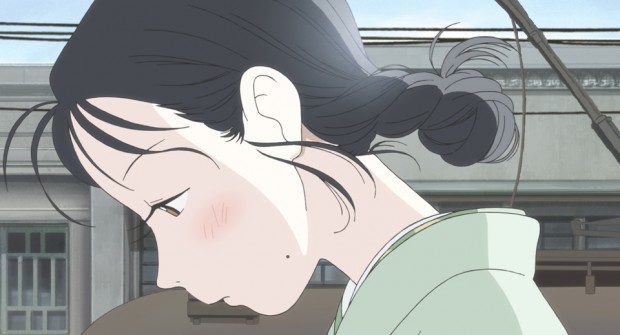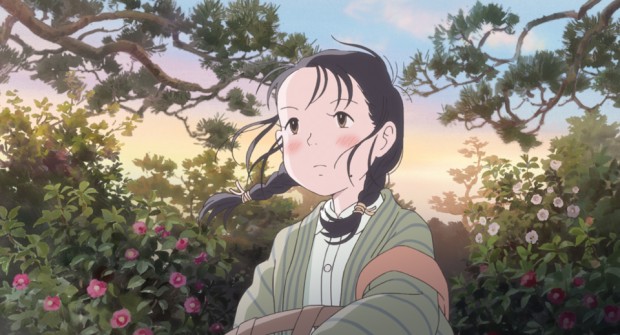Sunao Katabuchi focuses on the ordinariness of one Japanese couple’s lives as the specter of war looms in the award-winning In This Corner of the World.
Earlier this year, Sunao Katabuchi’s intimate World War II family drama In This Corner of the World won the Japanese Academy Award for best animated film, beating Makoto Shinkai’s record-breaking Your Name. Katabuchi already enjoyed a distinguished career in animation, having worked on such popular titles as Cardcaptor Sakura, Magical Shopping Arcade Abenobashi and Sherlock Hound, as well as serving as assistant director on Hayao Miyazaki’s beloved Kiki’s Delivery Service.
With the help of translator Junko Goda, Katabuchi discussed In This Corner of the World during a recent visit to Los Angeles, where he screened the film and answered questions at the Anime Expo, prior to the film’s release in theaters and on disc in America.
Based on Fumiyo Kouno’s manga, which will be published in English this fall, Corner tells the story of Suzu, an artistic but diffident young woman, who moves to a small village near Hiroshima when she marries the gentle Shusaku.
Kuono’s carefully depictions of the details of daily life excited Katabuchi. “The scenes in the manga of Suzu making a kimono into the mopei pants women wore during the war and gathering wild plants for dinner made me really want to make this film,” he says. “But Ms. Kouno also shows the battleship Yamato in the background. The seemingly ordinary bridge Suzu and Shusaku stand on while they talk was the target for the plane that dropped the atomic bomb on Hiroshima. The shadow of war emphasized the preciousness of everyday life — cooking, mending, gardening.”
“I sent Ms. Kouno’s a letter, asking permission to animate In This Corner of the World,” Katabuchi says. “It turned out she had watched my TV series Meiken Lassie (based on Eric Knight’s popular novel Lassie Come Home (1996), and the feature Mai Mai Miracle (2008). Like This Corner of the World, they both depict little snippets of everyday life. When she received the letter, she realized not only had she been watching my work, I had been watching hers. So she said the film was probably fated to be.”
Because In This Corner of the World focuses so closely on daily life in rural Japan during the 1930s and ’40s, Katabuchi felt it was essential to present that life as accurately as possible, which required more detailed research than a typical period film. “Unfortunately, the survivors are getting very old, so I felt we couldn’t use them as a source,” he says. “We had to do our own research: We sought out government documents, local town records and personal journals.”
Although the war inevitably alters the characters’ lives, Katabuchi never allows it to eclipse the relationship between Suzu and her husband: “Suzu was never quite sure why Shusaku chose her, because she doesn’t realize her value. She doesn’t even recognize her talent as an artist. She thinks she’s a very boring person. Shusaku is always telling her, ‘You make my life better.’ But she doesn’t listen until tragedy strikes. Suzu and Shusaku aren’t quite on the same page until the end of the movie.”
Although he confesses he has ideas for at least two more films “in his head right now,” Katabuchi may have other work to complete before he can get to them. The storyboards he and assistant director Chie Uratani (who is also his wife) prepared included 200 scenes that didn’t make it to final film. So talks are underway about making an extended version of In This Corner of the World.






 Win a Funko X Lilo & Stitch Prize Pack!
Win a Funko X Lilo & Stitch Prize Pack! 
